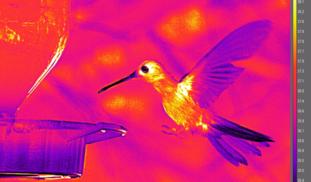Please wait...
About This Project
Will hummingbirds tolerate high temperatures due to climate change? Many studies look at heat tolerance during rest, but we study heat tolerance during hovering. Hummingbirds produce extra heat while hovering that must be dissipated to prevent overheating. Our previous work shows that in warm temperatures hovering hummingbirds cannot cool themselves. In this study we explore whether or not hummingbirds select perches in cool places between hovering bouts to facilitate heat loss.

Browse Other Projects on Experiment
Related Projects
How do polar bears stay healthy on the world's worst diet?
Polar bears survive almost entirely on seal fat. Yet unlike humans who eat high-fat diets, polar bears never...
Uncovering hidden insect diversity associated with a likely undescribed gall-forming midge
Does a likely undescribed species of gall-forming midge (pers. comm. Ray Gagné) on Eriodictyon plants (Yerba...
Macrofungi of the California archipelago
The eight islands of the California Archipelago are a well-studied biodiversity hotspot — but we know almost...


